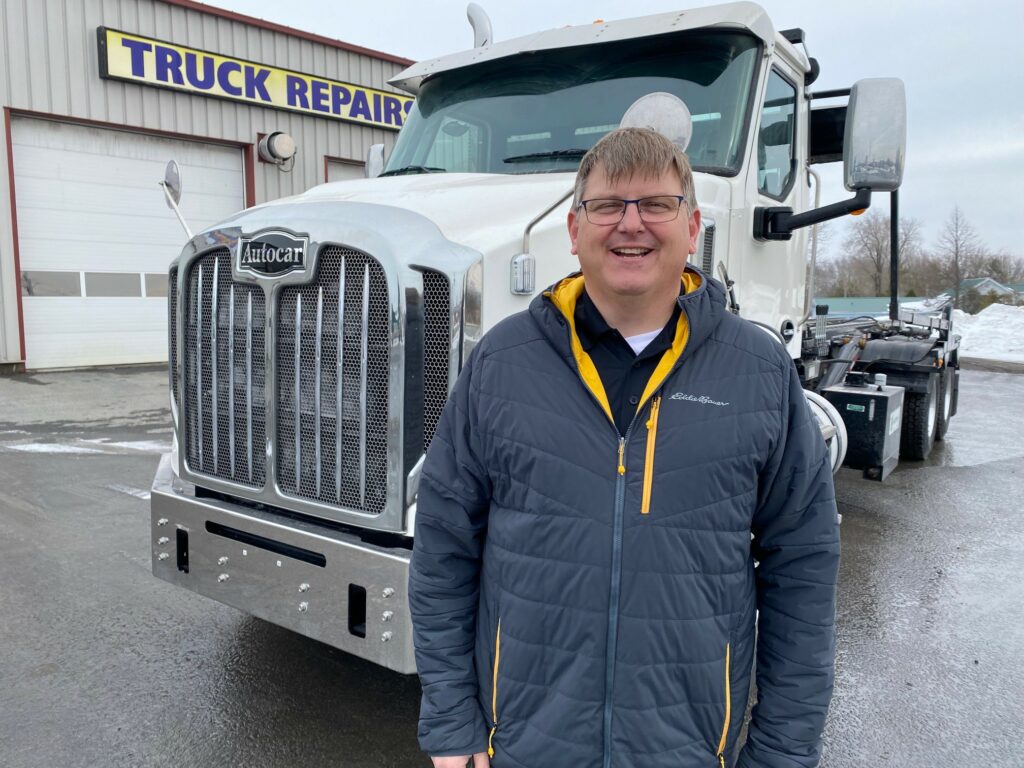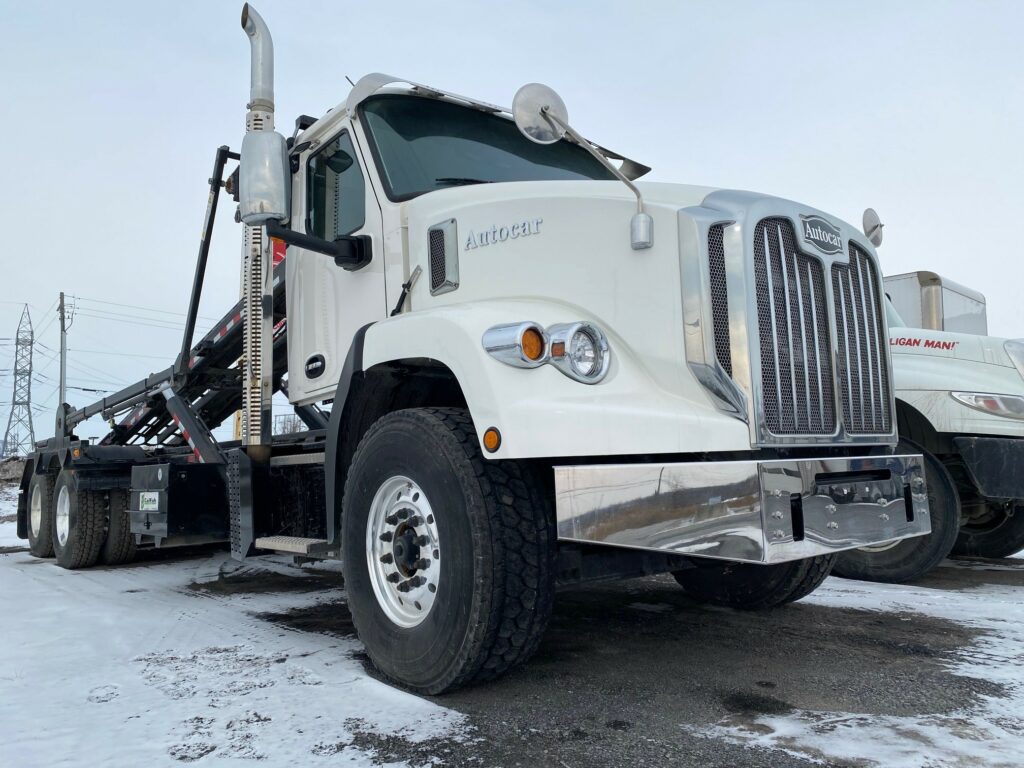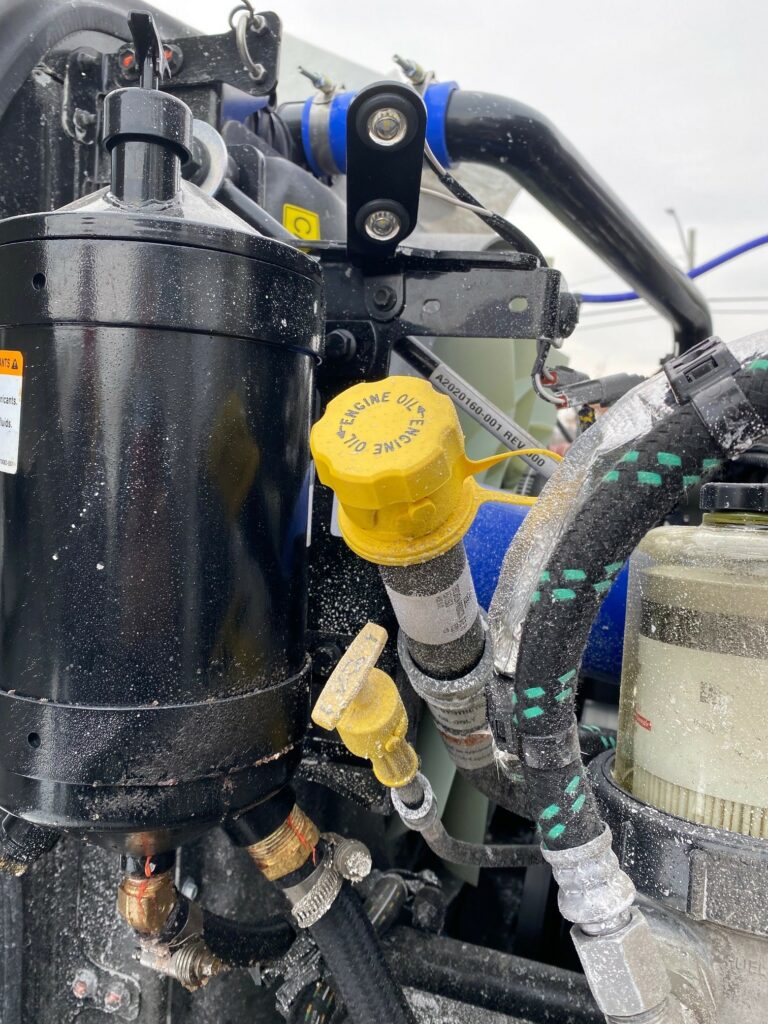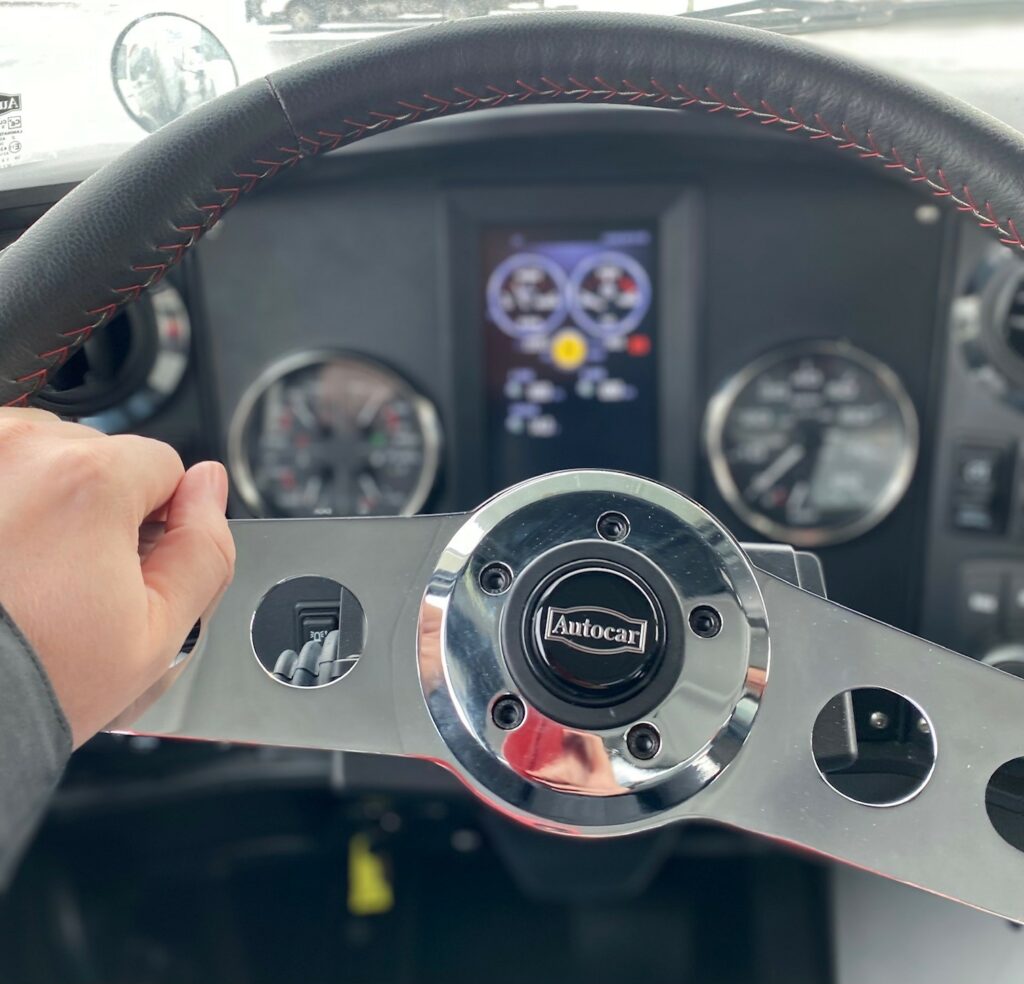Driving Autocar’s DC-64R vocational truck
You’ve likely yet to see one in the wild, rare as they are, but the Autocar DC-64 severe-service trucks are beginning to trickle into Canada. Launched in 2019, Autocar has since expanded the line to cover refuse (DC-64R), mixer (DC-64M) and dump (DC-64D) applications.
Fred Woods, business development manager for Commercial Truck Repair in Cornwall, Ont., says his company owner Raymond Desormeaux has been instrumental in pulling the brand into Canada. A picture of the first such truck to come to Canada – a DC-64D that went to a Quebec City-area fleet – is prominently displayed on the wall of Woods’ office and when I visited in mid-February another one was in the shop getting fitted with a Beau-Roc dump body in preparation for delivery to a Kingston-area customer.

In the lot was a DC-64R roll-off, which Woods would allow me to drive on local roads and on Hwy. 401. Woods is enthusiastic about the brand’s potential in the Canadian market, and specifically Ontario where most buyers are small fleets who will appreciate the longevity Autocar promises with its “Always up” tagline.
“We are the first full-line Autocar dealership in Canada,” Woods explained. “We see some definite potential.”
But the sales approach is different, acknowledged the former International and Mack Trucks salesman. The Autocar DC-64 is still very much a handbuilt truck. “If you’re a guy who’s going to flip it every five years, maybe we’re not for you,” he said, noting Autocar is designed to last longer than mass-produced trucks.
Woods recently visited the Alabama factory where the trucks are built and noted the chassis, as it’s assembled, is pushed by hand to the next station – not rolling down an automated assembly line. “It takes a little bit longer to put together, but it’s put together right,” he observed.
The spec’ing process is also different. You won’t find yourself poring through a Bible-sized databook. Once your dealer inputs your application, a limited range of options are available for selection. But, noted Woods, many features – such as the Sheppard M100 steering gears – that would be upgrades on other models, come standard.
A range of Cummins engines, Allison transmissions, Meritor axles, and bodies are available. Woods has been working directly with Autocar to educate them on Ontario’s Safe, Productive, Infrastructure-Friendly (SPIF) regulations so the chassis can easily be SPIF-ified once it arrives at the dealer. He insisted the truck was designed from scratch for the toughest duty cycles.
“It’s not a Class 7 that was built up to a Class 8,” he said. “It’s a Class 8 and it’s heavy-duty built, starting with the fames.”

In the yard
Autocar claims to offer the only vocational truck with 160,000 psi yield strength frame rails, a 24% improvement over the industry standard 120,000 psi. Liners are eliminated in 90% of dump truck configurations and aluminum cross-members help to reduce weight.
The Autocar DC-64 is an imposing machine. It has a large grille, a tall ride height for exceptional ground clearance, and a bold stance. Everything about the truck looks heavy and well built, including the hood. But a gas-strut assistance system made the hood surprisingly effortless to open, requiring just 10 lb. of force. I opened it with one hand without having to plant my foot on the bumper for leverage.
Under the hood, LED lights light up key inspection areas so you can do that 5 a.m. pre-trip without having to juggle a flashlight while inspecting fluid levels. The wiring is neatly routed and clipped and enters the firewall through a well sealed hole to avoid penetration from dirt, snow and corrosive road salt or other chemicals. The cab has built-in channels specifically for the routing of wires.

Along the frame, wires and air lines are mounted four to five inches inside the rails to avoid rubbing and chafing. The Galfab roll-off body was installed on the Autocar assembly line, huckbolted into place, eliminating the need to drill unusued holes for other potential body types. “The truck shows up ready to work,” Woods noted, adding it also reduces delivery delays caused by body builders.
The cab is made of steel and doors can support 450 lb. of weight as you heave yourself up into the cab. Autocar says the cab is the most severely tested in the segment, undergoing 770 hours of shaker testing.
Inside the cab
The biggest surprises about the Autocar DC-64 are found inside the cab. It’s a beast of a truck designed for the most rugged applications, but the interior had some nice, modern features including a vibrant seven-inch screen with seemingly endless display options.
Toggling through the various options was easy with the use of a scroll wheel mounted near the steering wheel. Technicians will also find the driver display useful when servicing the truck; it will identify failed fuses as well as offer access to service manuals and wiring schematics.
Visibility from the driver’s seat was excellent thanks to the high ride height and large windshield. An expansive, curved rear windshield wraps around the rear corners of the cab offering excellent rearward visibility as well (assuming you don’t have a dump body blocking the view).

The truck boasted a surprisingly tight turning radius (50-degrees, Autocar claims) and was easy to handle thanks to that M100 steering gear box. The Allison shifted smoothly and the Cummins responded quickly to throttle inputs. As for ride, this was a roll-off. Unloaded. On beat-up roads. In February. It’s never going to float like a Cadillac in those conditions. But, it cruised well on the 401 when I got to stretch its legs. And I didn’t have a load to go pick up, so I didn’t get to experience how it would feel under more normal working conditions.
One thing’s for certain, it’s a well-designed truck that doesn’t skimp on driver comforts (the nicely stitched leather steering wheel and large cupholders come to mind) while also taking service requirements into consideration. Dash panels can be quickly pulled to access the wiring behind. Batteries are stored under the passenger seat outside of the elements.
The Autocar DC-64 will never be a mass-produced, low-price option for the vocational truck buyer. But for the severe-service customer who wants a purpose-built truck that’s designed for harsh conditions while also being driver-friendly – not an easy balance to strike – it’s an offering that’s unlike anything else currently in the marketplace.
Have your say
This is a moderated forum. Comments will no longer be published unless they are accompanied by a first and last name and a verifiable email address. (Today's Trucking will not publish or share the email address.) Profane language and content deemed to be libelous, racist, or threatening in nature will not be published under any circumstances.
Will Chalmers Suspensions be offered on Autocar trucks soon?
-
You can order a Autocar with Chalmers suspension. Are you interested in building a ready mix??
Will Autocar have a sleeper version?
Will it be priced on pre pandemic prices?
I have a sense that I’m one of a multitude that will not pay $200k for a $140k truck. We will just seek other means of employment. Good luck, though